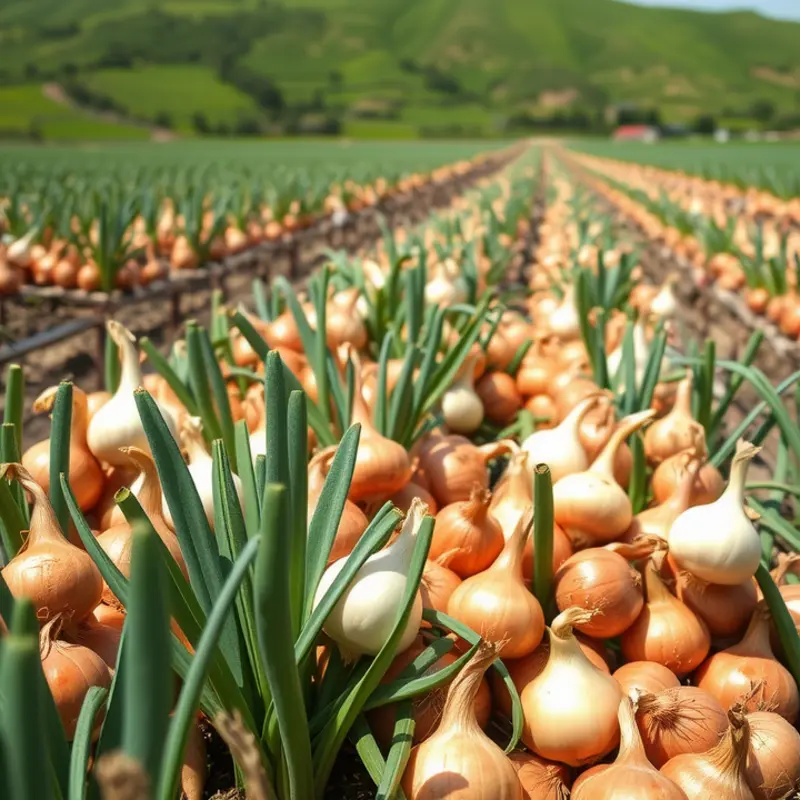Whether you’re avoiding garlic for health reasons or simply ran out of garlic powder, there are many flavorful alternatives to explore in your kitchen. These substitutes not only replicate the unique taste of garlic but also provide added nutritional benefits. Here, you’ll find practical ingredient guides and flexible cooking solutions that can easily fit into your culinary repertoire.
Herbs for a Fresh Flavor

When garlic powder isn’t an option, herbs can step in as flavor champions. Each herb brings its distinct character, enriching dishes with both aroma and depth, similar to garlic’s unmistakable zest.
1. Basil
Basil offers a gentle peppery flavor with a hint of sweetness. Fresh basil, especially, enlivens dishes with its aromatic oils. It works wonders in tomato-based sauces, salads, and soups. Dried basil may lack the fresh version’s intensity, but it still contributes a lively element to your culinary creations.
2. Oregano
Oregano delivers a more robust, earthy flavor. This herb can easily stand in for garlic powder, especially in Mediterranean dishes. Both fresh and dried oregano carry plenty of punch. Consider adding oregano to roasted vegetables or simmered sauces for a delightful twist.
3. Chives
With a mild oniony aroma, chives can mimic some aspects of garlic. Use them fresh to garnish soups, omelets, or salads. Dried chives, though less pungent, can also be rehydrated and used in similar ways. Their subtle yet sharp taste enhances dishes without overwhelming them.
4. Rosemary
Rosemary’s pine-like fragrance makes it a stellar option for hearty dishes. This herb pairs excellently with roasted meats and potatoes. When substituting for garlic powder, use it sparingly, as rosemary’s intense flavor may overshadow other ingredients.
5. Thyme
Thyme offers a minty and slightly lemony profile. It can be used in much the same way as garlic powder, especially in stews and roasted meats. Its persistent aroma can weave through dishes, providing a warm, comforting essence that complements many flavors.
6. Dill
Dill provides a unique bright, anise-like aroma. It pairs well with fish, potatoes, and yogurt-based sauces. Though distinct, its flavor can add a refreshing dimension to dishes where garlic powder typically shines.
To make the most of these herbs, try blending them. A mix of basil, oregano, and thyme can provide a complex flavor that’s reminiscent of garlic, yet distinctive. Keep in mind that the timing of adding herbs can influence their potency. Fresh herbs are best added towards the end of cooking, while dried herbs should be integrated earlier to allow their flavors to develop fully.
For those interested in a broader spectrum of flavor experimentation, exploring low-waste cooking ideas can enhance your meal prep routines while ensuring your herb usage is efficient. Visit Practical Ingredient Batching for tips on optimizing your kitchen workflow.
Harnessing the power of herbs not only substitutes garlic powder effectively but also opens new flavor avenues. These versatile ingredients ensure your culinary adventures remain exciting and diverse.
Onions & Their Powerful Replacements

The robust onion family offers some exciting alternatives to garlic powder, with shallots, leeks, and onion powder each presenting unique flavor profiles. These onion relatives not only bring distinct tastes but also provide nutritional benefits and versatility in cooking. Let’s take a closer look at these three substitutes and how they can effectively replace garlic powder in your culinary adventures.
Shallots:
Shallots are small, mild-flavored onions with a subtle blend of garlic and onion notes, making them an excellent alternative to garlic powder. Their delicate flavor can elevate vinaigrettes, sauces, and roasted dishes. To incorporate shallots, mince them finely and sauté until they turn golden. This process brings out their inherent sweetness and aroma. For dressings, mix minced shallots with vinegar and olive oil for a refined touch that complements salads and roasted vegetables.
Leeks:
Leeks offer a sweet and gentle onion flavor. They’re less pungent than garlic but bring a gracious depth to soups, stews, and grain dishes. The white and light green parts of leeks are most commonly used. To prepare leeks, slice them thinly and rinse thoroughly to remove grit. Sauté them with a bit of salt and herbs to create a flavorful base for savory dishes. Leek and potato soup exemplifies how leeks can star in a dish, offering a creamy texture and layered taste without overpowering the palate.
Onion Powder:
Onion powder provides a concentrated onion flavor similar to garlic powder. It’s versatile and easy to incorporate, requiring no chopping or peeling. This makes it a convenient pantry staple. Use it in dry rubs, marinades, or sprinkled over roasted nuts for an extra kick. While it lacks garlic’s specific aroma, onion powder can enhance dishes by adding a savory depth. Remember to start with a small amount, as its flavor can be quite potent.
When using these onion alternatives, consider the dish’s balance and the desired intensity. Shallots offer sophistication to sauces, leeks bring a tender touch to hearty dishes, and onion powder ensures convenience with a savory punch. By experimenting with these substitutes, you can enjoy varied flavors and expand your culinary repertoire.
For additional ideas on enhancing flavor without over-reliance on traditional spices, consider exploring non-salt flavor boosters here.
Final words
Finding alternatives to garlic powder not only helps create dishes suitable for a variety of dietary preferences but also encourages culinary experimentation. Fresh herbs and onion options can easily transform your meals into mouth-watering delights without the need for garlic. Enjoy the process of testing these substitutes and remember to adjust your recipes to enhance flavor while being attentive to your health needs. With these creative solutions, you’ll become more adaptable in the kitchen, creating flavorful meals that cater to every palate.







